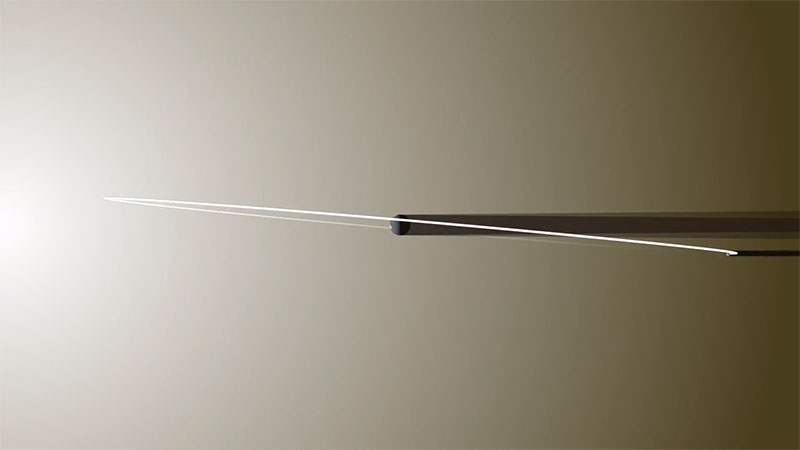NewsletterOctober 8, 2023
To celebrate the upcoming Solar Eclipse, Associate Professor of Physics Leslie Hebb is authoring this monthly newsletter as part of the campus’ Year of the Sun programming. Hebb is a researcher of the fundamental properties of stars and extrasolar planets, the formation and evolution of planetary systems, and the magnetic activity on low mass stars.
This month’s issue is below:

T-minus 6 months: Geometry of Eclipses
Today is almost exactly 6 months until the total solar eclipse in Geneva! Let’s warm up with a partial eclipse on October 14 and get oriented with the geometry of eclipses.
On Saturday, October 14 starting at 12:01 p.m., the Moon will begin to pass in front of the Sun, blocking some of its light. By 1:14 p.m., the maximum amount of blockage will occur and then the Moon will continue along its orbit and out of the direct line to the Sun. From Geneva’s vantage point on Earth, about a quarter of the Sun will be blocked, so we will experience a partial eclipse, but other parts of the U.S. will be able to see what’s called an annular eclipse.
Learn about our partial solar eclipse watch party here.
Solar eclipses of any kind - of which there are three: total, partial and annular - can only happen during the New Moon phase when the Sun and Moon rise together in the morning and set together in the evening. However, eclipses don’t happen every New Moon. To understand why we have eclipses sometimes and not other times, and why we have three different kinds of eclipses, let’s consider a miniature model of the solar system where the sizes and distances of the Sun, the Moon and the Earth are all shrunk down by the same amount.
Imagine placing a miniature Earth, a bit bigger than a basketball, at the door to the Bozzuto Boathouse with 30 feet of dock in front of it. The Sun, in this miniature solar system, would not be so miniature. It would be the size of an 8-story building, resting on the opposite shore across Seneca Lake, 2 miles to the East as the crow flies. The line connecting the basketball-Earth and the 8-story Sun-building is the surface of the lake. The Moon, which would be about the size of a baseball, would orbit around the basketball-Earth once every month, just like our Moon.
Interestingly, the Moon’s orbit is not a perfect circle, so it is not always the same distance from the Earth every day of the month. At its most distant point, the baseball-Moon would be just at the edge of the dock, but at its closest approach, it would be more than 3 feet closer. That doesn’t seem like much, but it causes the Moon to look bigger in the sky at times when it is closer to the Earth (giving us Super Moons). In addition, the path the Moon travels around the Earth is tilted with respect to the Earth-Sun line by 5 degrees. The baseball-Moon travels around its orbit spending most of its time either above the surface of the water or below it. It is only exactly at the level of the water when it crosses from above the water to below or vice versa. If the Moon, in its tilted path, happens to be crossing the water line at the phase of the New Moon when it is directly in front of the Sun, a solar eclipse will occur. This happens about twice per year somewhere on the Earth.

The distance the moon is from the Earth at that time determines whether there will be a total solar eclipse or an annular one. When the Moon is at a point in its orbit that brings it closest to the Earth, it appears big enough in the sky to completely block out the Sun. Three feet in from the edge of the dock, the baseball would completely cover the 8-story building on the opposite shore when viewed from the door to the boathouse. However, when the baseball-Moon is at the edge of the dock, its farthest distance from Earth, it is not quite big enough in the sky to fully block the 8-story Sun-building. This would be the annular eclipse where the Moon passes directly in front of the Sun, but only blocks the center of the Sun and leaves a ring of light around it.
Stay tuned for more about the Sun as the total solar eclipse in Geneva, N.Y. approaches and check out the partial solar eclipse on October 14!
